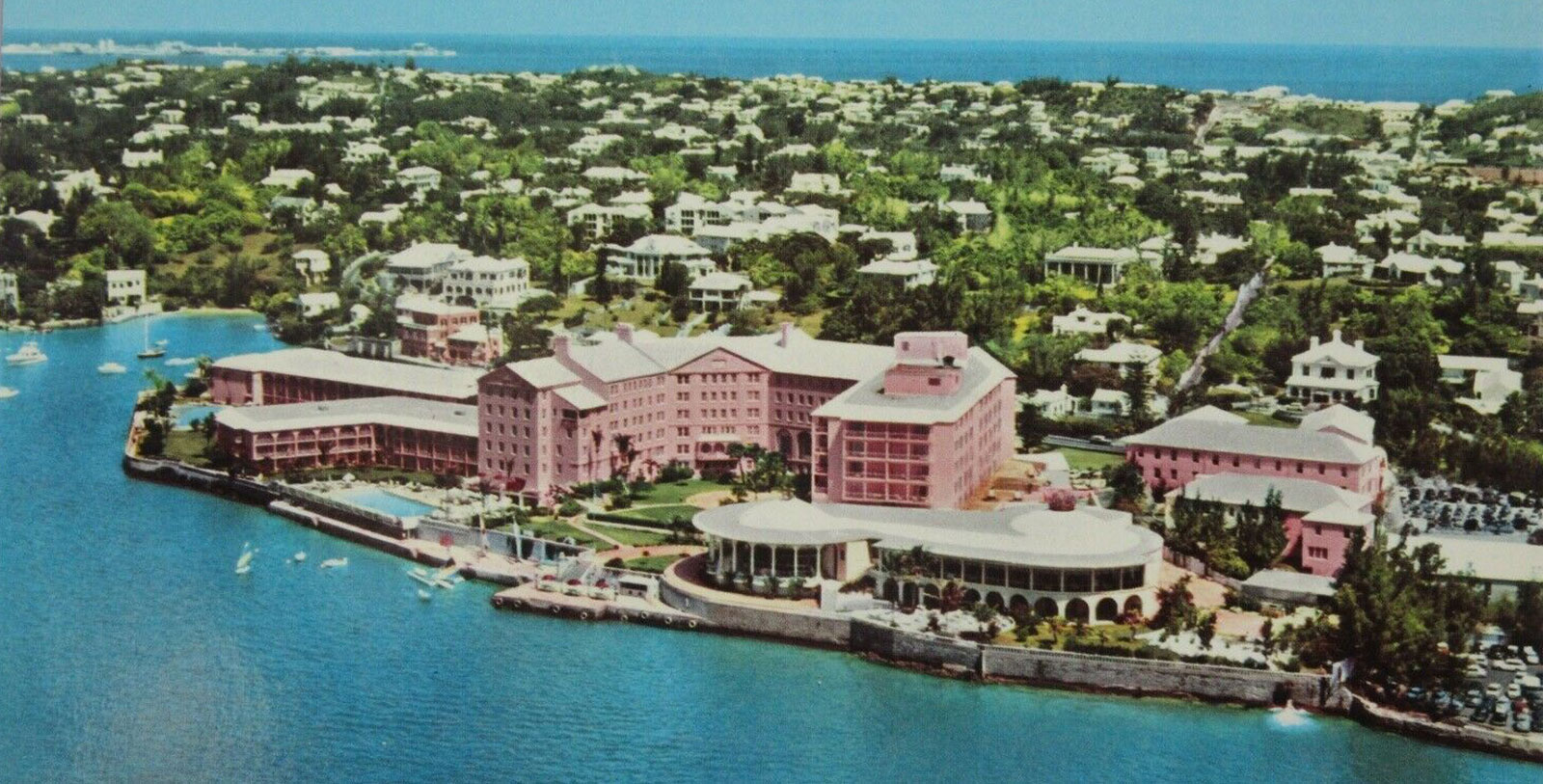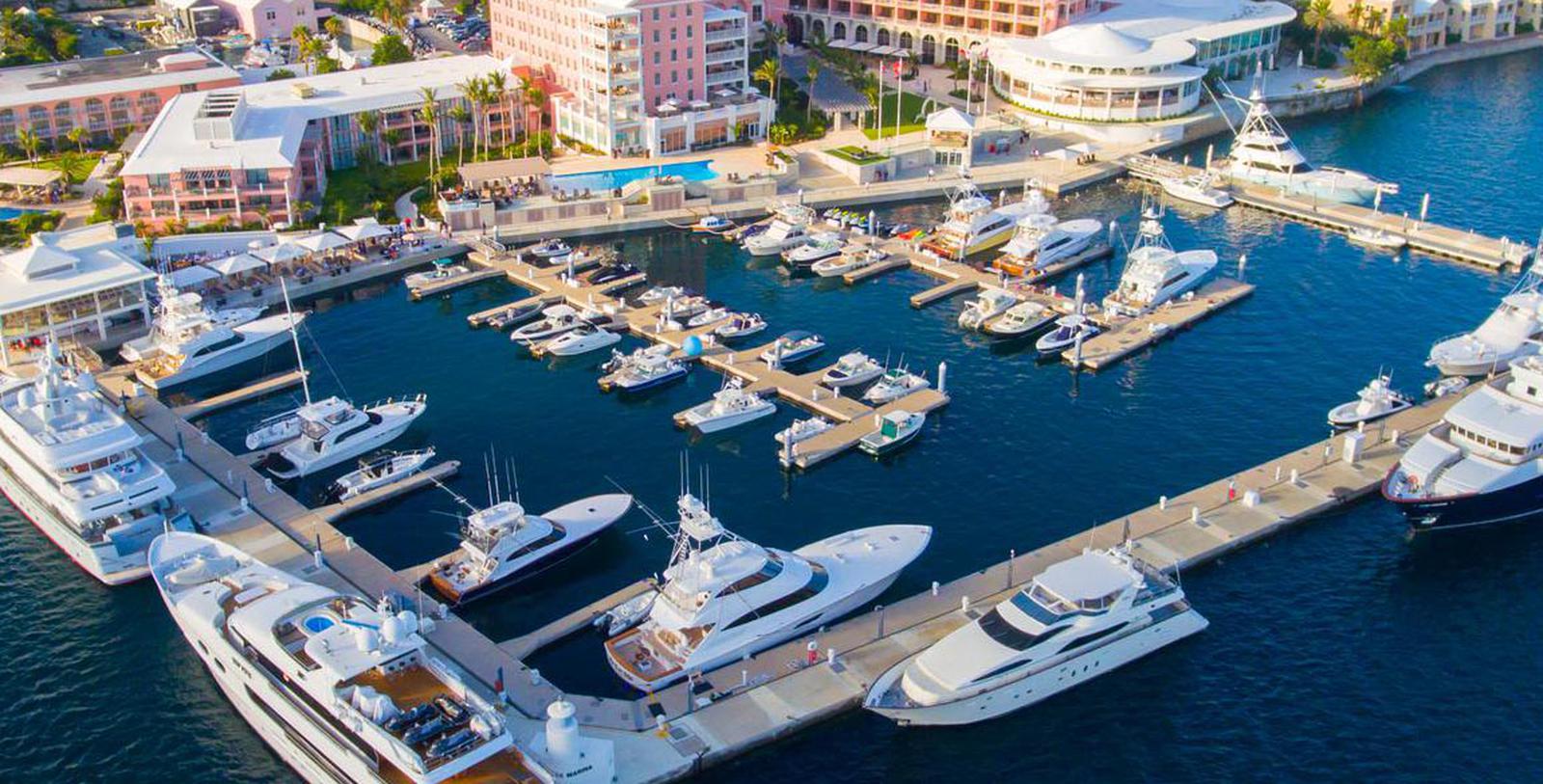Receive for Free - Discover & Explore eNewsletter monthly with advance notice of special offers, packages, and insider savings from 10% - 30% off Best Available Rates at selected hotels.
history
Discover Hamilton Princess & Beach Club, A Fairmont Managed Hotel, which was originally named after Princess Louise of the United Kingdom.
Hamilton Princess & Beach Club, A Fairmont Managed Hotel, a member of Historic Hotels Worldwide since 2018, dates back to 1885.
VIEW TIMELINEA member of Historic Hotels Worldwide since 2018, Hamilton Princess & Beach Club, A Fairmont Managed Hotel, has been among Bermuda’s most cherished holiday destinations since its debut in the late 19th century. The Hamilton Princess & Beach Club first opened on January 1, 1885, following a highly publicized visit to Bermuda by Princess Louise, one of Queen Victoria’s daughters. Harley Trott of Trott & Cox had created the business in hopes of capitalizing upon the island’s newfound fame. He specifically believed he could create a stunning seaside resort hotel that could compete with the ones in Palm Beach, Florida. Trott even settled on using Princess Louise for the source of the hotel’s name, which operated as “The Princess” for many years. With long, shady verandas, a blue slate roof, and four stories of opulent guestrooms, the hotel was considered a local gem. The building was extremely luxurious, boasting amenities such as gas lights, hot-and-cold running water, and spectacular five-inch mirrors. During its early years, the hotel made a name for itself with upper-class socialites living on the island, as well as wealthy leisure travelers, political figures, and entrepreneurs. When Thomas Cook Tours started offering voyages to Bermuda from New York, the hotel staff, dressed in white jackets, would wave pink handkerchiefs as they greeted the guests.
Over time, The Princess had established itself as the most upscale place to stay on Bermuda. In fact, great luminaries from around the world even began to visit The Princess frequently. Mark Twain was once such regular, who would smoke cigars while signing autographs and reciting poetry. And Ian Fleming, the author of the James Bond novels, had found the hotel so impressive that he included it as a location in his book, Dr. No. (Other famous guests would include Muhammed Ali and Charles, the Prince of Wales.) During World War II, the hotel acted as a British intelligence center and waystation that analyzed all mail, radio, and telegraphs that crossed the Atlantic. But the island soon became a prime vacation destination for British and American families after the war, as air traffic to Bermuda increased tenfold. Despite its increased popularity, the billionaire Daniel Ludwig eventually purchased the retreat in 1959. He subsequently invested into thoroughly renovating its entire structural appearance, making it one of the most prestigious retreats on the island. Then in the late 1990s, the hotel wound up under the care of the Canadian Pacific Railway, which was reborn as part of Fairmont Hotels and Resorts a year later. Now known as the “Hamilton Princess & Beach Club,” this spectacular destination is among the most historic hotels in the Fairmont Hotels & Resorts family today.
-
About the Location +
Located some 640 miles east of Cape Hatteras, the archipelago of Bermuda is one of the most popular holiday destinations in the world. The Hamilton Princess & Beach Club itself resides on island of Bermuda, which has been known to maritime travelers for centuries. The first person to ever visit Bermuda was the Spanish explorer Juan de Bermúdez, who recorded that the island was devoid of any human life. Passing along word of its existence, Bermuda quickly became an occasional pit stop for Spanish and Portuguese ships traveling across the Atlantic. But a dense coral reef surrounded the island, discouraging its long-term settlement by either civilization. In fact, Iberian mariners took to calling the area the “Isle of Devils,” due to its inhospitable climate and dangerous waters. The island only saw its first permanent settlement appear in the early 17th century, after a hurricane shipwrecked an English vessel called the “Sea Venture.” Part of a flotilla of seven ships slated to arrive in Jamestown, Virginia, the Sea Venture had specifically run aground on Bermuda’s coral reefs. Under the leadership of Admiral George Somers, the 151 survivors constructed two smaller craft that evenutally finished the Sea Venture’s original journey. Not all of the marooned passengers had traveled with Somers abord the new boats, though, instead choosing to stay behind and found a little vibrant community known as “St. George’s Town.” (Some scholars speculate that the saga surrounding the island’s settlement inspired William Shakespeare to write his play, The Tempest.)
The island soon became the center of a royal colony with Bermuda acting as its first capital. Bermudians soon played an important role in the continued English—and later British—settlement of North America, as its wharves and warehouses often fueled convoys scheduled to reach the Thirteen Colonies and the West Indies. Generations of Bermudians also immigrated to the newer colonies, specifically settling in places like the Carolinas, Georgia, and The Bahamas. Those who remained on the island began to pursue maritime commerce, although the local colonial administration initially discouraged the practice in favor of agriculture. Indeed, the island’s government sponsored the creation of large tobacco plantations, which evenutally led to the adoption of slavery throughout Bermuda. (Slavery throughout the British Empire was outlawed by national decree in 1833.) Nevertheless, industries such as shipbuilding, whaling, and even piracy became ubiquitous on Bermuda, making it one of the busiest ports control by Great Britain. Wealth subsequently flowed into Bermuda, leading to the expansion of many new towns and villages. But its relative isolation also gave it a unique sense of independence, with its population often siding against the British Parliament on issues ranging from the English Civil War to the American Revolution. In fact, the British Royal Navy actively had to garrison Bermuda during the American Revolutionary War in order to ensure that the island ceased trading goods with the nascent United States.
Bermuda and remained an important seaport well into the 19th century, with the British government even constructing the Royal Naval Dockyard on nearby Ireland Island in 1811. To ensure that the shipyard was never threatened, the British Army subsequently fortified the entire archipelago via its special Bermuda Garrison. Despite the sizeable civilian population present, the island was nonetheless viewed primarily as a military base for many decades thereafter. It was only until after the arrival of Princess Louise in the early 1880s that Bermuda’s reputation began to change. Declaring the island to be “a place of eternal spring,” Princess Louise inspired people throughout the British Empire to visit for brief winter holidays. A few people even founded their own seasonal manors throughout the island, and one enterprising businessman, Henry Trott, opened a luxurious boutique hotel called “The Princess” to accommodate the new influx of people. But Bermuda’s full transformation into a renowned international vacation hotspot happened once World War II had ended. Many British and American servicemen were posted to Bermuda during the war, tasked with protecting the their respective merchant vessels from German submarines. Enchanted by the island’s beautiful atmosphere, many began to return to the island for summer trips in the years that followed the conflict. Various airlines helped cultivate this interest, as they started to sponsor special flights to Bermuda’s wartime airstrip, Kindley Field (today’s L.F. Wade International Airport.) Dozens of new hotels opened throughout the island as such, which gave birth to a prosperous tourism industry that has lasted to this very day.
-
About the Architecture +
When Henry Trott began constructing the first iteration of the Hamilton Princess & Beach Club, he used a particular blend of British colonial motifs unique to Bermuda. It is important to note that the architecture of Bermuda has changed significantly throughout its history, starting with the arrival of its first European settlers in the 17th century. The earliest colonial architecture reflected the popular designs that were common in Great Britain at the time, namely adaptations of Tudor and Gothic-themed architecture. But the construction often used locally sourced building materials, most notably limestone. (Interestingly, contemporary sources referred to the Bermudian limestone as being “coral.”) As such, many of the island’s first European-inspired dwellings featured stone facades, as well as thick, slate roofs that could withstand the elements. Most buildings at the time were small, rudimentary cottages, which gradually gave way to more extravagant buildings over the following two centuries. Newer architectural styles—specifically Neoclassical and Georgian—became ubiquitous across Bermuda, especially among the manors that wealthy colonists had constructed within the island’s nascent communities. Among the many architectural transformations that impacted the way Bermudians crafted their homes were the embrace of casement windows, wall plating, and hip roofs that contained a mixture of lime, sand, and water. Porticos were seen frequently, as well, although they gradually gave way to the installation of gorgeous, sprawling verandas. But the aesthetics became softer and more refined at the onset of the Victorian era. Architects incorporated rounded pillars and gateways, while capitals became the typical standard for porch pillars. Structural detailing also greatly increased, too, with elements like the quoin appearing frequently. Even some aspects of Tudor architecture made a significant comeback, including the reemergence of the gabled roof. By the time Henry Trott finally developed the Hamilton Princess & Beach Club, most of those building practices had become the standard throughout the island.
-
Famous Historic Guests +
Mark Twain, author known for writing The Adventures of Tom Sawyer and Adventures of Huckleberry Finn.
Ian Fleming, author best remembered for penning the renowned James Bond book series.
Muhammad Ali, professional boxer and civil rights activist often regarded as one of the best athletes of the 20th century
William Stephenson, spy known as “Intrepid” who served as the real-life inspiration for the character of James Bond.
Charles, Prince of Wales and heir to the British throne.


























